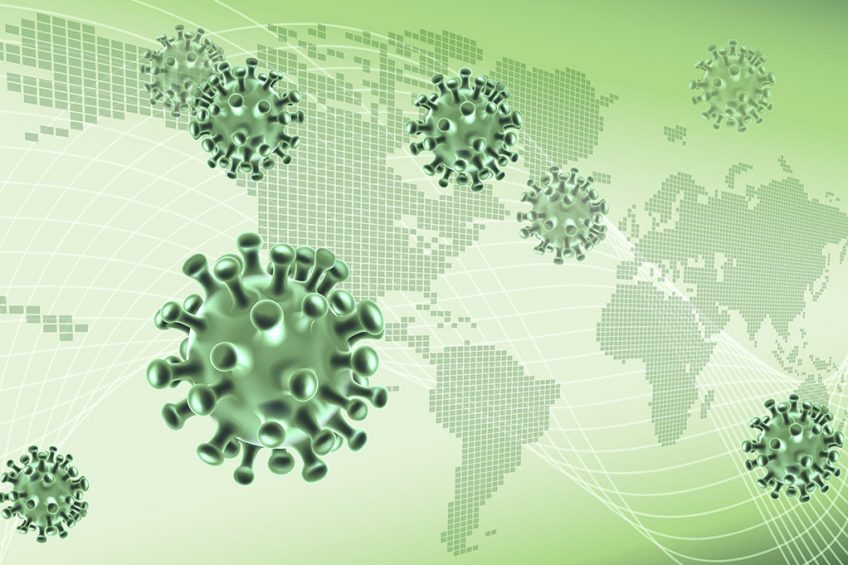Quarterly update: Pig prices will fall, and rise, in 2021

2020 was characterised by Covid-19 affecting every aspect of our lives. It left a strong impression on pig prices, exacerbating the global effects of that other virus – African Swine Fever. Will the situation for 2021 be any better? Pig market expert Dr John Strak looks back and ahead.
May I use this opportunity to wish all my readers a happy and healthy New Year. We all need that – as a minimum. I will not dwell on the terrible effects of Covid-19 in 2020 beyond saying that I pray that this coming year will be a year of recovery in our health and in our economic fortunes. Vaccines from the scientists and determination from all of humanity will, I hope, get us back on track.
The 2 viruses once more: Covid-19 and ASF
If I am right about how we will beat Covid-19, then there is one other set of circumstances we need to focus on that will have a huge bearing on the fortunes of the global pig industry. Namely, the pace of recovery from, or the further spread of, African Swine Fever – the pig virus that appeared in China and Asia in 2018.
Central to the uncertainty and risk that these alternative futures create is the position of China. It has been important to understand China’s position in the global economy for a generation now (since it made a significant entry into global trade) but, for the pig and pork sector (and for many primary commodities), that importance is huge since global pig and commodity prices are directly affected by China’s situation.
Deep uncertainty about development of ASF
I have written about this link before, but I need to remind you of the deep uncertainty about these drivers and how the recovery from or further spread of ASF will have an impact on global prices. Everyone agrees that China’s pig sector was hit hard by ASF in 2019 – the breeding herd was reported to be down by around 40%. But the central issue for western pork exporters is, how do we gauge the speed and scale of China’s recovery? A year ago the consensus view was that it would take China several years to get its breeding herd and pork production back to pre-ASF levels.

Read earlier quarterly updates by John Strak
This quote from a Rabobank analyst is a typical example of the outlook back then: “Everybody recognises that China’s pig population has been decimated but it is not fully appreciated that the market will take years – probably half a decade – to rebalance due to the huge restocking required and the fact that global imports simply cannot make up the shortfall.”
Chinese pork production to normalise by 2024
In its latest report, Rabobank now expects, ”Chinese pork production to normalise by 2024” with production increasing at least 10% from 2020’s levels, and “a full recovery in pig numbers due in 2023 or 2024.” Even more optimistically, the official line in China is now that the total herd and sow numbers had recovered to more than 90% of normal levels by the end of November 2020 (official news agency, Xinhua).
Confused? I don’t blame you.
Prices, imports and slaughter levels
What are the key (and most reliable) metrics doing – prices, imports and slaughter levels? Do they shed any light? Well, China’s hog prices have fallen back in 2020 from their earlier peaks but they bounced back in mid-December. And although pigmeat imports have been reported as continuing to increase in the 3rd and 4th quarter, it is not known how much of that volume is being used to replenish stocks and how much is to satisfy domestic consumption. Significantly, hog slaughter levels are now showing signs of increasing and, being a lagging indicator, the kill numbers would be expected to rise after, say, 6-9 months of an initial herd expansion.

Expansion in the time series for the Chinese sow herd was first reported in late 2019 and it has been growing steadily throughout 2020 (albeit this is a relatively unreliable statistics). So an uptick in slaughter numbers would be logical now. Figures 1 and 2 tend to suggest that production of pigs and pork have increased in China in the 2nd half of 2020.
Will pig and pork production continue to rise?
But will they continue to rise, and will productivity be reduced in the rebuilt herd because of the reduced genetic potential of some of the retained breeding females from commercial herds? These “three-way cross females” will have fewer offspring per litter and over their life time. Clearly, these questions demand reliable data in order to get answers that are useful for production and investment decisions. We will return to this point at the end of this article.

Situation in the EU: slumping pig prices
In the EU, pig prices have slumped in the 4th quarter of 2020. This mainly reflects the impact of ASF found in the wild boar population in Germany and the subsequent ban on German-sourced imports by China, Japan and South Korea (there have also been local disruptions to the demand for pigs by processors whose employees have been infected with Covid-19).
The resulting “surplus” of finished pigs in Germany is affecting the demand for weaners and finished pigs previously sent to Germany for rearing or slaughter. These pigs are, literally, “homeless”. The normal flow of pigs and pigmeat in the European supply chain was severely disrupted. Piglet/weaner prices are reported to be almost 40% down on last year and have fallen by nearly 50% since the beginning of 2020.

Reversal of fortunes for Danish and German pig producers
Figures 3 and 4 illustrate the falls in pig prices and, in the latter chart, the reversal of fortunes for Danish and German pig producers. The Danes’ prices normally trail behind their German neighbours but that changed in the 3rd and 4th quarter of 2020. But both countries’ producers have seen their prices fall steeply. This disruption and the low margins that farmers have suffered must affect herd numbers and supplies in the 1st half of 2021.
A forecast by the German authorities estimates that German pork production will be down by 10% in 2021.

USA: difficult times for hog producers
On the other side of the big pond, US hog producers have also seen difficult times in 2020. Figure 5 shows that the “BBQ bounce” for hog prices did not arrive in 2020. Instead, we had a summer slump. The market returned to a normal seasonal pattern in the US at a late stage of the 3rd quarter and maintained its seasonality until the year end.

That wasn’t nearly enough to prevent US producers from cutting back on sow numbers. According to the September census report the US breeding inventory, at 6.33 million head, was down 1.5% from last year. In the survey of intentions, US hog farmers said that they will farrow 3.12 million sows during the Sept-Nov 2020 quarter, which is down 5% from the actual farrowings during the same period in 2019. Several analysts believe that the USDA’s September 2020 census understated the extent of the contraction in the US herd.

Our global pig price cycle is constructed in a way that should pick up all the push and pull factors inherent in a freely working global market and give us a sign of the direction of prices in the months ahead. The last time I wrote here the model was, “now showing signs that an upward phase is about to begin”.
Global pig prices falling – and rising
But that upward movement in the global price index was short-lived and the global price is now falling week by week. ASF’s impact in Germany has not been confined to that country, and China’s willingness to disrupt global trading patterns in the medium term has, effectively, slammed the brakes on for most of the EU’s pig producers. The USA’s producers aren’t in a much better position as too many hogs chase too few buyers. Supply contractions in North America and Europe are underway but expansion of the Chinese herd is countering this.
What about demand – I hear a voice from the back asking?
Quite right to ask: there looks to be falling import from China in 2021 but Covid-19 left a big hole in the demand for meat protein in the West as foodservice and “events” went into lockdown last year. I began this piece by suggesting that science and vaccines would defeat Covid-19 in 2021. If that is correct then a lot of consumer demand for hospitality and “good times” could return in 2021.
Weak prices as the Year of the Ox approaches
This scenario would then suggest that the falling pig prices we saw in the 2nd half of 2020 could be replaced by rising prices in the 2nd half of 2021. In the 1st quarter of 2021, however, the numbers point to weak prices as the various supply effects of Covid-19 and ASF “unwind”.
In mid-February, we will celebrate Chinese New Year, the Year of the Ox. This is reputed to be a hardworking and honest animal and, more than ever, we need thorough and reliable data analysis in 2021 so that we can make robust decisions about future global pig and pork production.











